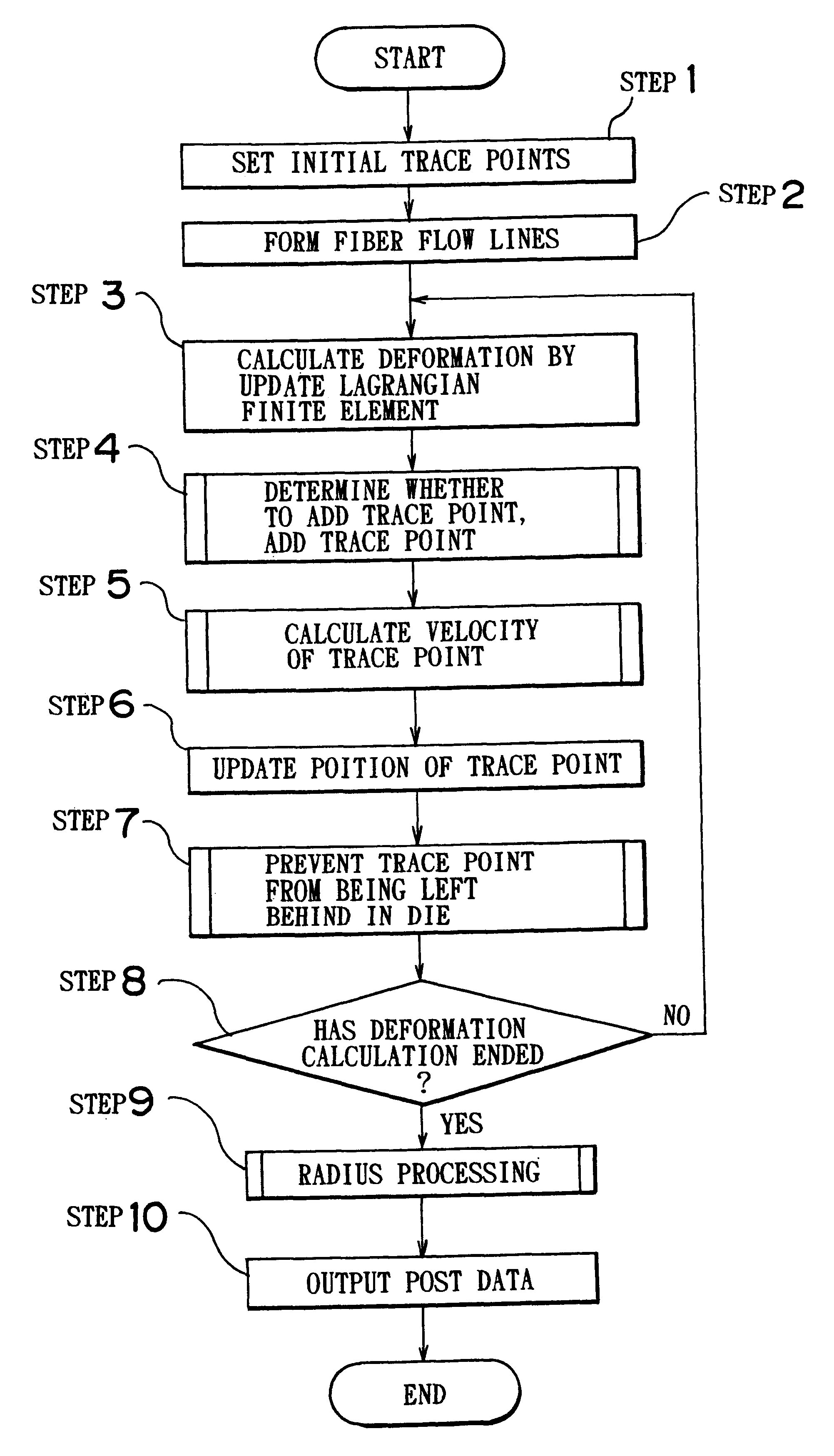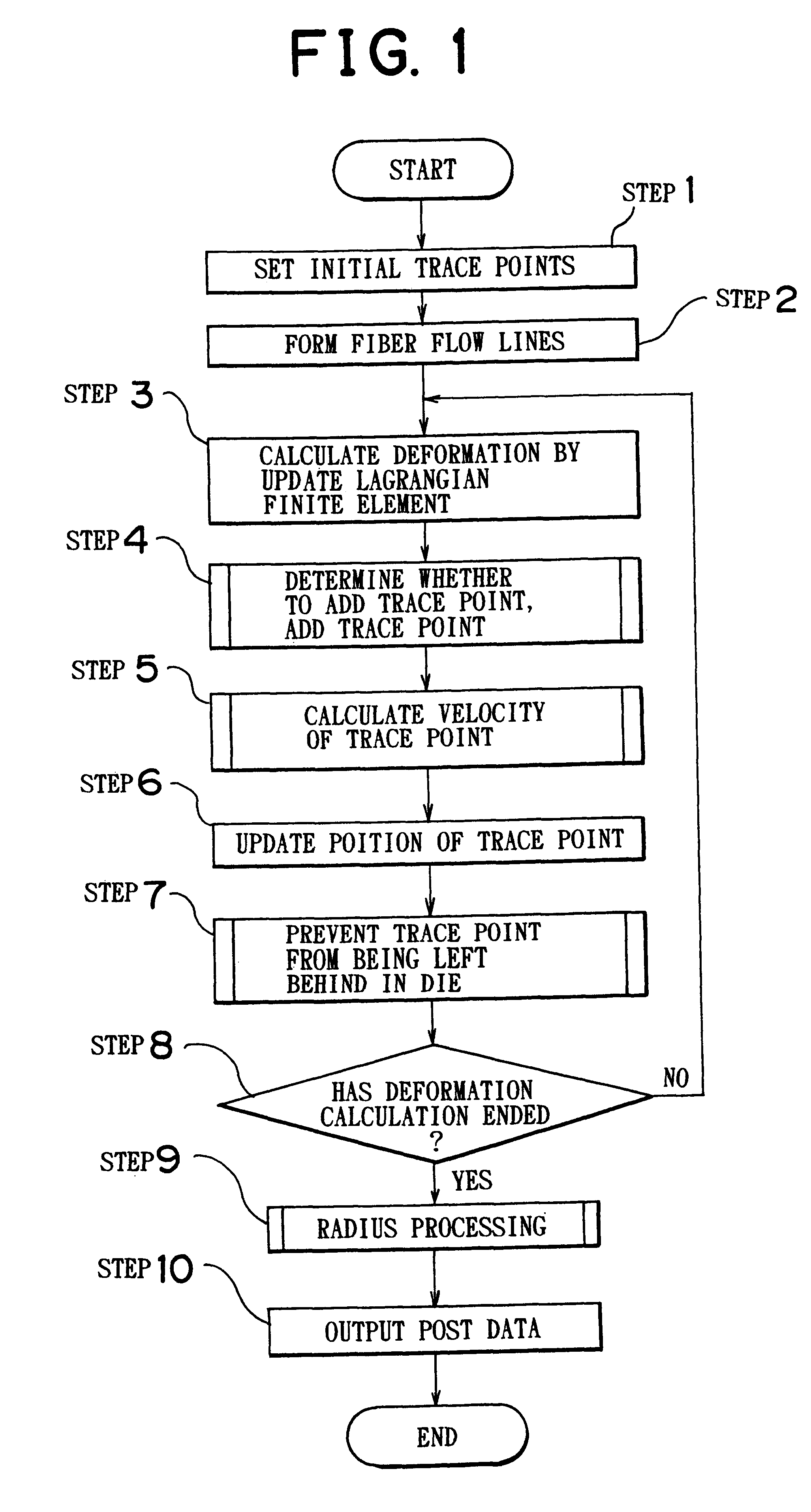Method for analyzing forging process and medium storing program for executing the method
a technology of forging process and medium storage, applied in analogue processes, instruments, manufacturing tools, etc., can solve the problems of consuming a long time period, aforementioned conventional arts, and inability to quickly achieve process design,
- Summary
- Abstract
- Description
- Claims
- Application Information
AI Technical Summary
Benefits of technology
Problems solved by technology
Method used
Image
Examples
Embodiment Construction
A preferred embodiment of the present invention will be described in detail hereinafter with reference to the accompanying drawings. In a forging process analyzing method according to this embodiment, analysis is performed by a computer, such as a personal computer, a workstation or the like, by a procedure as illustrated by the flowchart of FIG. 1. A program needed to cause the computer to execute necessary processes is recorded in a medium, for example, a floppy disk, a compact disk or the like. The computer reads the program recorded on the medium, and executes processes described below.
In steps 1 and 2, the computer sets many trace points in the interior of a workpiece of steel or the like. In setting trace points, the computer take into account the initial shape of the workpiece, the target shape, condition of friction against a tools, and other information. The group of trace points thus set are used to express a fiber flow line of the workpiece. That is, straight line segment...
PUM
| Property | Measurement | Unit |
|---|---|---|
| Length | aaaaa | aaaaa |
| Thickness | aaaaa | aaaaa |
| Shape | aaaaa | aaaaa |
Abstract
Description
Claims
Application Information
 Login to View More
Login to View More - R&D
- Intellectual Property
- Life Sciences
- Materials
- Tech Scout
- Unparalleled Data Quality
- Higher Quality Content
- 60% Fewer Hallucinations
Browse by: Latest US Patents, China's latest patents, Technical Efficacy Thesaurus, Application Domain, Technology Topic, Popular Technical Reports.
© 2025 PatSnap. All rights reserved.Legal|Privacy policy|Modern Slavery Act Transparency Statement|Sitemap|About US| Contact US: help@patsnap.com



